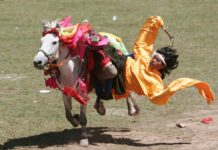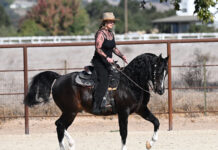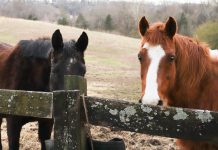Veterinary experts at BEVA congress stressed that weight loss, diet and management changes to thwart obesity, are the best weapons in the battle to prevent laminitis.
Laminitis is one of the most common conditions treated by equine vets but, despite continuing research much about the condition, including exact links with endocrinopathic disease, remains unclear.
At BEVA Congress earlier this month David Rendle, Equine Internal Medicine Specialist at Rainbow Equine Hospital, Andrew Van Eps from the University of Pennsylvania and Nicky Jarvis of Redwings Horse Sanctuary discussed the latest knowledge on laminitis including causes, diagnosis, management and prevention.
Around 90% of laminitis cases have endocrinopathic laminitis, “which is the same as pasture associated laminitis,” explained David Rendle. This involves either equine metabolic syndrome (EMS) or pituitary pars intermedia dysfunction (PPID), but while greater understanding of EMS and PPID has helped in preventing laminitis, there is still much that remains unknown.
He pointed out that insulin dysregulation is often disregarded in the assessment of laminitis when PPID is suspected and warned: “If insulin dysregulation and metabolic dysfunction are overlooked in horses that are diagnosed (often incorrectly) with PPID and appropriate management changes are not implemented, the risk of laminitis may persist.”
On the management of endocrinopathic laminitis he concluded that “central is clearly diet and management change, not pharmaceuticals.”
Andrew van Eps reiterated that the key to prevention of endocrinopathic laminitis is early identification of horses at risk. “Management to reduce the laminitis risk in these cases can then include a combination of dietary control, pasture access management, weight loss and exercise which can dramatically reduce the risk of laminitis development or progression,” he said.
Nicky Jarvis explained the grave negative impact obesity has on horse health. “The horse isn’t just a little bit chunky it actually has ‘ill health’ because of that amount of fat,” she said. She went on to explain that when a horse is classified with a body condition score of 5 out of 5 approximately 40% of its bodyweight on a weighbridge is fat, equating to 240kg of fat for a 600kg. “Owners love to say “but he’s always been like this and he’s never had laminitis before” so it can be incredibly hard work to change the mindsets.”
Nicky explained her approach to weight loss, which aims at dropping 0.5 to 1% of the horse’s current bodyweight per week by feeding a daily ration (dry matter) equivalent to 1.5% of bodyweight. Appreciating that weight loss on the field can be difficult as intake can’t be quantified, she outlined practical management tactics such as strip grazing, grazing muzzles, track systems, shared grazing with sheep or pre-grazing with horses who are in healthy condition.
She emphasised the advantages of forage analysis to ensure hay is of a low water soluble carbohydrate content (10 – 12%) and the benefits of soaking it. For animals resistant to weight loss, despite a controlled diet, she suggested the careful introduction of good quality barley straw as a partial forage alternative for horses with good teeth, at up to 40% of the ration.
The long term approach, she advised, “is rather than crash diets, either in the summer or once they have got laminitis, is to encourage people to realise that it’s a natural thing for horses to lose weight over winter. And, if we can get them to keep those rugs off and persuade them not to go to their local shop and buy supplementary feeds and grains just because they feel cold, we wouldn’t have so many problems during the summer months.”
For more information on how to manage your horse’s weight download BEVA’s horse owner resources here https://www.beva.org.uk/Resources-For-Owners/Resources-for-Owners and here https://www.beva.org.uk/Resources-For-Vets-Practices/Clinical-Practice-Guidance/Obesity-in-horses











